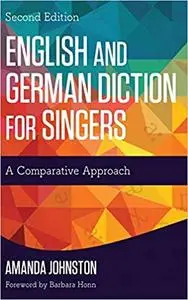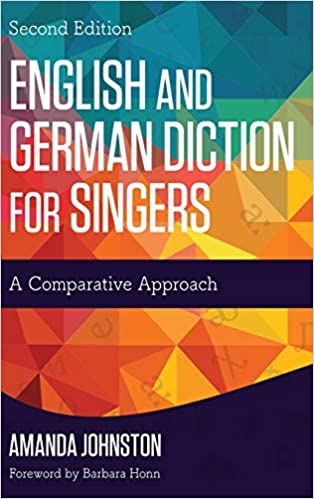Amanda Johnston, "English and German Diction for Singers: A Comparative Approach"
English | ISBN: 1442260882 | 2016 | 360 pages | PDF | 5 MB
English | ISBN: 1442260882 | 2016 | 360 pages | PDF | 5 MB
Lyric diction is a portal to powerful and meaningful vocal performance because diction enables singers to communicate the vision of both the poet and the composer. The study of diction involves learning to perceive speech patterns in different languages, practicing their precise articulation, recognizing this in speech and singing, and developing an awareness of the refined movements of the articulators and their effects on singing tone.
In the second edition of English and German Diction for Singers, Amanda Johnston continues her comparative, modernized approach to lyric diction. This comprehensive resource offers a thorough analysis of the German and English languages and includes extensive oral drills, word lists, tables, charts, musical examples, and even tongue twisters. Unique to this publication is the illustration of the rhythmic timing and release of consonants within the International Phonetic Alphabet transcriptions in all musical examples.
This book is designed for both undergraduate and graduate courses in German and English lyric diction and is an invaluable resource for classical singers, vocal coaches, and voice teachers alike.
Improvements to the second edition include:
An online workbook that includes extensive written exercises suitable for classroom or independent use
Chapter-by-chapter video clips that demonstrate the concepts addressed in the text
Expanded chapters address the schwa, the treatment of monosyllabic incidental words, the use of R, and the correct formation of the elusive upsilon and extended epsilon
Consideration of loan words and stressed vs. unstressed closed German vowels
Integrated practice drills for mastering challenging and unfamiliar phonemes
Enlarged musical examples show the rhythmic timing and release of voiced and voiceless consonants
An expanded appendix on suggested repertoire for diction study
Inclusion of specific diction choices suitable for musical theatre repertoire
Expanded discussion of healthy glottal onsets, including the concept of juncture
Use of the latest resources, namely Deutsche Rechtschreibung (2014) and Cambridge Pronouncing Dictionary, 18th edition (2011)
For all users, there is a WORKBOOK. Access the workbook here.
The ANSWER KEY is available for instructors. Contact textbooks@rowman.com for details.



